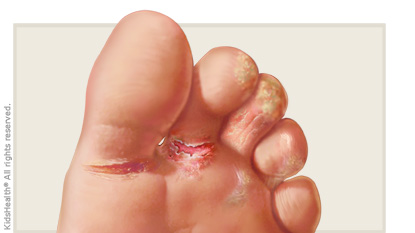- Home
- Parents Home
- Allergy Center
- Asthma Center
- Cancer Center
- Diabetes Center
- A to Z Dictionary
- Emotions & Behavior
- First Aid & Safety
- Food Allergy Center
- General Health
- Growth & Development
- Flu Center
- Heart Health
- Homework Help Center
- Infections
- Diseases & Conditions
- Nutrition & Fitness Center
- Play & Learn Center
- School & Family Life
- Pregnancy Center
- Newborn Center
- Q&A
- Recipes
- Sports Medicine Center
- Doctors & Hospitals
- Videos
- Para Padres
- Home
- Kids Home
- Asthma Center
- Cancer Center
- Movies & More
- Diabetes Center
- Getting Help
- Feelings
- Puberty & Growing Up
- Health Problems of Grown-Ups
- Health Problems
- Homework Center
- How the Body Works
- Illnesses & Injuries
- Nutrition & Fitness Center
- Recipes & Cooking
- Staying Healthy
- Stay Safe Center
- Relax & Unwind Center
- Q&A
- Heart Center
- Videos
- Staying Safe
- Kids' Medical Dictionary
- Para Niños
- Home
- Teens Home
- Asthma Center
- Be Your Best Self Center
- Cancer Center
- Diabetes Center
- Diseases & Conditions
- Drugs & Alcohol
- Expert Answers (Q&A)
- Flu Center
- Homework Help Center
- Infections
- Managing Your Medical Care
- Managing Your Weight
- Nutrition & Fitness Center
- Recipes
- Safety & First Aid
- School & Work
- Sexual Health
- Sports Center
- Stress & Coping Center
- Videos
- Your Body
- Your Mind
- Para Adolescentes
Athlete's Foot
What Is Athlete's Foot?
Athlete's foot, or tinea pedis (say: TIN-ee-uh PEH-dus), is a common skin infection that is caused by a fungus (say: FUN-guss). This fungus eats old skin cells. And plenty of them can be found on the feet!
Why Is It Called Athlete's Foot?
It's called athlete's foot because athletes often get it. The fungus that causes it can be found where athletes often are. The fungus grows on the warm, damp surfaces around pools, public showers, and locker rooms. People walk barefoot on these surfaces and fungus ends up on their feet. Or they might use a damp towel that has the athlete's foot fungus on it.
But anyone can get this infection. People with sweaty or damp feet are at risk. Walking barefoot where others also walk barefoot is one way the fungus can get on your feet in the first place. That's why your mom or dad might say to wear flip-flops when you shower in a public shower.
What Are the Signs & Symptoms of Athlete's Foot?
Athlete's foot usually causes redness, flakiness, peeling, or cracking of the skin on the feet. It may itch, sting, or burn, or simply feel uncomfortable. It's usually on the soles of the feet, and the areas between the toes. Sometimes the toenails are involved and they get thick, white or yellowish, and brittle.

What Will the Doctor Do?
A doctor can usually figure out that you have athlete's foot by looking at the skin on your feet. Your doctor may swab or scrape off a skin sample to test for fungus or for bacteria, because sometimes other conditions can cause similar symptoms. Don't worry, this won't hurt — you have lots of extra layers of skin on your feet!
Treatment is usually simple. For mild cases, your doctor may have you apply a powder that contains medicine or cream that kills fungus. This should make your feet feel better in a few days. Sometimes you'll need to use the medicine for up to a month to get rid of the athlete's foot completely.
You'll also need to keep your feet dry and keep your shoes off as much as possible because fungus can't easily grow in dry, open air. If doing these things doesn't help clear up the infection, your doctor might prescribe a stronger medicine. This one will be the kind you swallow, not just something that you apply to your feet.
It's important to see a doctor about your athlete's foot because if it goes untreated, it will continue to spread, making your feet feel really itchy and uncomfortable and will become harder to get rid of.
How Can I Prevent Athlete's Foot?
Many people will develop athlete's foot at least once in their lives. Some will get it more often. To help avoid it:
- Keep feet clean and dry by washing them daily and drying them completely, especially between the toes. (Use a clean towel.)
- Wear waterproof shoes or flip-flops when walking around in locker rooms, public showers, and public pool areas.
- Switch between wearing shoes or sneakers to prevent the build-up of moisture. Choose ones that are well-ventilated with small holes to keep the feet dry.
- Avoid socks that trap moisture or make the feet sweat. Instead, choose cotton or wool socks or ones made of fabric that wicks away moisture.
- Change socks regularly, especially if your feet get sweaty.
- Regularly wash socks, bedsheets, and towels.
- Don't share items like shoes, socks, and towels.

© 1995- The Nemours Foundation. KidsHealth® is a registered trademark of The Nemours Foundation. All rights reserved.
Images sourced by The Nemours Foundation and Getty Images.
